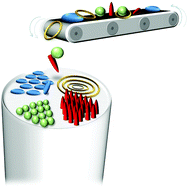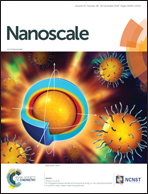Self-assembly on optical fibers: a powerful nanofabrication tool for next generation “lab-on-fiber” optrodes
Abstract
Self-assembly offers a unique resource for the preparation of discrete structures at the nano- and microscale, which are either not accessible by other fabrication techniques or require highly expensive and technologically demanding processes. The possibility of obtaining spontaneous organization of separated components, whether they are molecules, polymers, nano- or micro-objects, into a larger functional unit, enables the development of ready-to-use plug and play devices and components at lower costs. Expanding the applicability of self-assembly approaches at the nanoscale to non-conventional substrates would open up new avenues towards multifunctional platforms customized for specific applications. Recently, the combination of the amazing morphological and optical features of self-assembled patterns with the intrinsic properties of optical fibers to conduct light to a remote location has demonstrated the potentiality to open up new intriguing scenarios featuring unprecedented functionalities and performances. The integration of advanced materials and structures at the nanoscale with optical fiber substrates is the idea behind the so-called lab-on-fiber technology, which is an emerging technology at the forefront of nanophotonics and nanotechnology research. Self-assembly processes can have a key role in implementing cost-effective solutions suitable for the mass production of technologically advanced platforms based on optical fibers towards their real market exploitation. Novel lab-on-fiber optrodes would arise from the sustainable integration of functional materials at the nano- and microscale onto optical fiber substrates. Such devices are able to be easily integrated in hypodermic needles and catheters for in vivo theranostics and point-of-care diagnostics, opening up new frontiers in multidisciplinary technological development to be exploited in life science applications. This work is conceived to provide an overview of the latest strategies, based on self-assembly processes, which have been implemented for the realization of lab-on-fiber optrodes with particular emphasis on the perspectives and challenges that lie ahead. We discuss the main fabrication techniques and strategies aimed at developing new multifunctional optical fiber nanoprobes and their application in real scenarios. Finally, we highlight some of the other self-assembly processes that have not yet been applied to optical fiber sensors, but have the potentiality to be exploited in the fabrication of future lab-on-fiber devices.

- This article is part of the themed collection: Recent Review Articles


 Please wait while we load your content...
Please wait while we load your content...